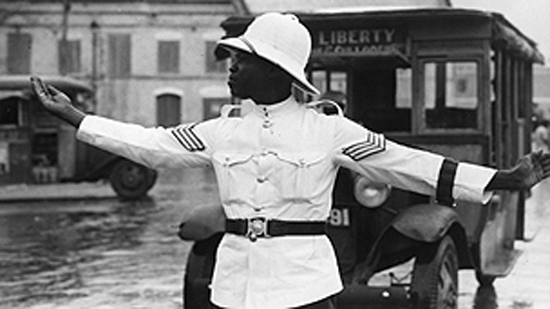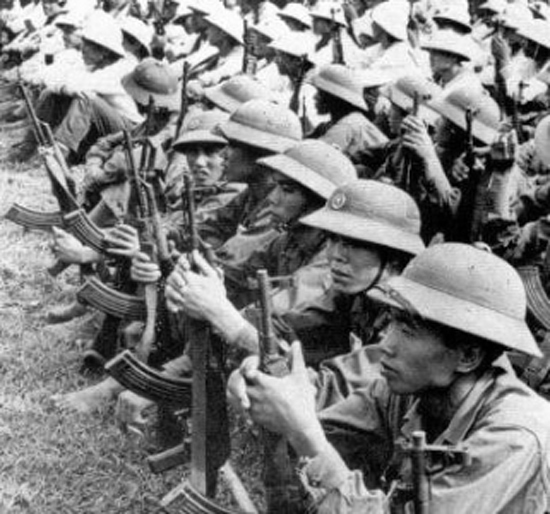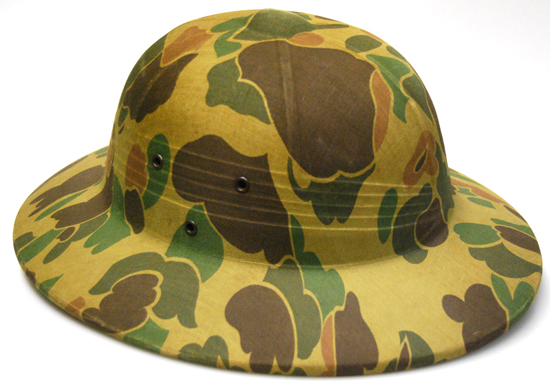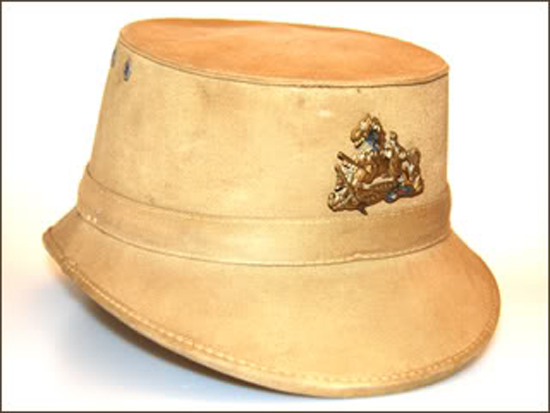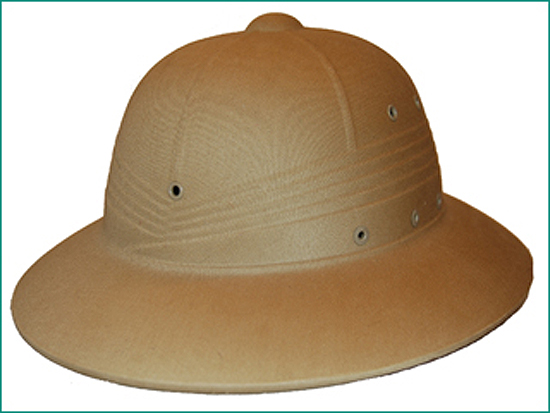The “sun never set on the British Empire” the saying went, and it is also true that the sun shined brightly on the British colonies in the Caribbean. Even as the Wolseley helmet faded from use as true “military” headdress it lived on in British colonies and post-colonies in the Caribbean and South America. Continue reading
The Original Camouflage: Khaki Part VIII – The North Vietnamese Army
While khaki was typically the color uniform of colonial powers, it was also used – alongside with the sun helmet – by the forces of North Vietnam during the conflict with the United States. In 1958 the PAVN (People’s Army of Vietnam) – also known as the NVA (North Vietnamese Army) began a modernization following its war that saw Indo-China “liberated” from French rule. This modernization included efforts to standardize its uniform.
While dark green is typically the color associated with PAVN forces, in the 1965-73 conflict with the United States, khaki and tan uniforms also became prevalent, especially among officers.
The Camouflage Pressed Fiber Helmet
The American pressed fiber sun helmet still remains very much a mystery at times. Its history hasn’t been well documented and while the research continues it isn’t clear when or even why changes to the patterns were made. What is notable is that the helmet appears to have gone through an evolution.
Now an interesting example has been discovered and it remains the only such one of its type. As seen above it is a camouflage version, which likely dates from the early 1940s. It features three grommet holes on each side, which are used to hold the liner and chinstrap in place. Remnants of the leather chinstrap remain. This helmet lacks the front grommet typically seen in helmets produced expressly for the USMC. Continue reading
The British Paratrooper Sun Helmet
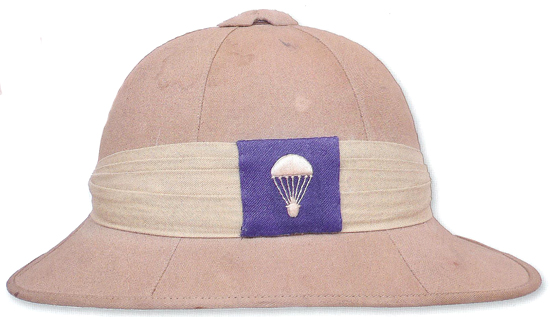
An Indian made sun helmet featuring the flash of the 151
Battalion of the Independent Parachute Brigade (Photo: Daniel Fisher and Oliver Lock)
When one thinks of a British Paratrooper helmet it is usually the steel helmets used in such notable engagements as the D-Day Landings to secure Pegasus Bridge and later during Operation Market Garden.
However, authors Daniel Fisher and Oliver Lock note in their new book British Airborne Headdress that a variety of other headdress including slouch hats, turbans and even sun helmets were used by various units of the Independent Parachute Brigade during and after World War II. Continue reading
Shako of the British South Africa Police (BSAP)
An interesting cousin to the South African polo style sun helmet is the shako used by forces of the British South Africa Police (BSAP), which was the paramilitary police force of Rhodesia. It was created as a force of mounted infantrymen in 1889 by Cecil Rhodes’ British South Africa Company. It was originally known as the British South Africa Company’s Police and run directly but the company. Continue reading
Khaki Sola Pith of the XII Army
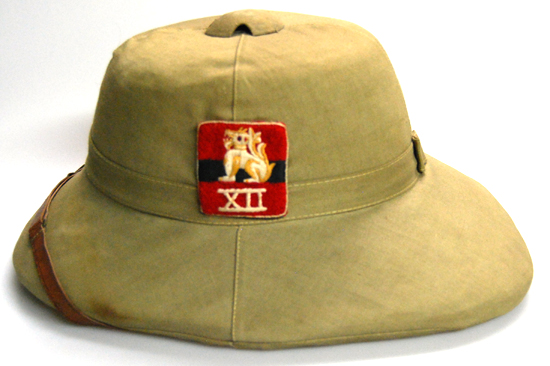 The Twelfth (XII) Army actually existed twice during the Second World War – although the first time it was created as a fictional formation as a Cairo-based deception department. Created by Dudley Clarke as part of the deception plan for Operation Husky, the Allied invasion of Sicily in July 1943, it was intended to have the Germans believe that the Twelfth Army was going to land in Greece and then advance into the Balkans.
The Twelfth (XII) Army actually existed twice during the Second World War – although the first time it was created as a fictional formation as a Cairo-based deception department. Created by Dudley Clarke as part of the deception plan for Operation Husky, the Allied invasion of Sicily in July 1943, it was intended to have the Germans believe that the Twelfth Army was going to land in Greece and then advance into the Balkans.
The army’s formation insignia was a trained seal balancing on its nose a terrestrial globe, which is obviously quite different from the above example. This is because in May of 1945 the phantom Twelfth Army was disbanded and a second Twelfth Army was created to take control of operations in Burma from the Fourteenth Army. Continue reading
What’s In a Name? The Pressed Fiber Helmet
The American pressed fiber helmet, which was used from the late 1930s until the 1990s, is unique in that it didn’t follow the U.S. Military tradition of naming everything. It had no model number and hence isn’t an M1 Sun Helmet – and for the record that might have been confusing with the M1 Steel Helmet. Continue reading

